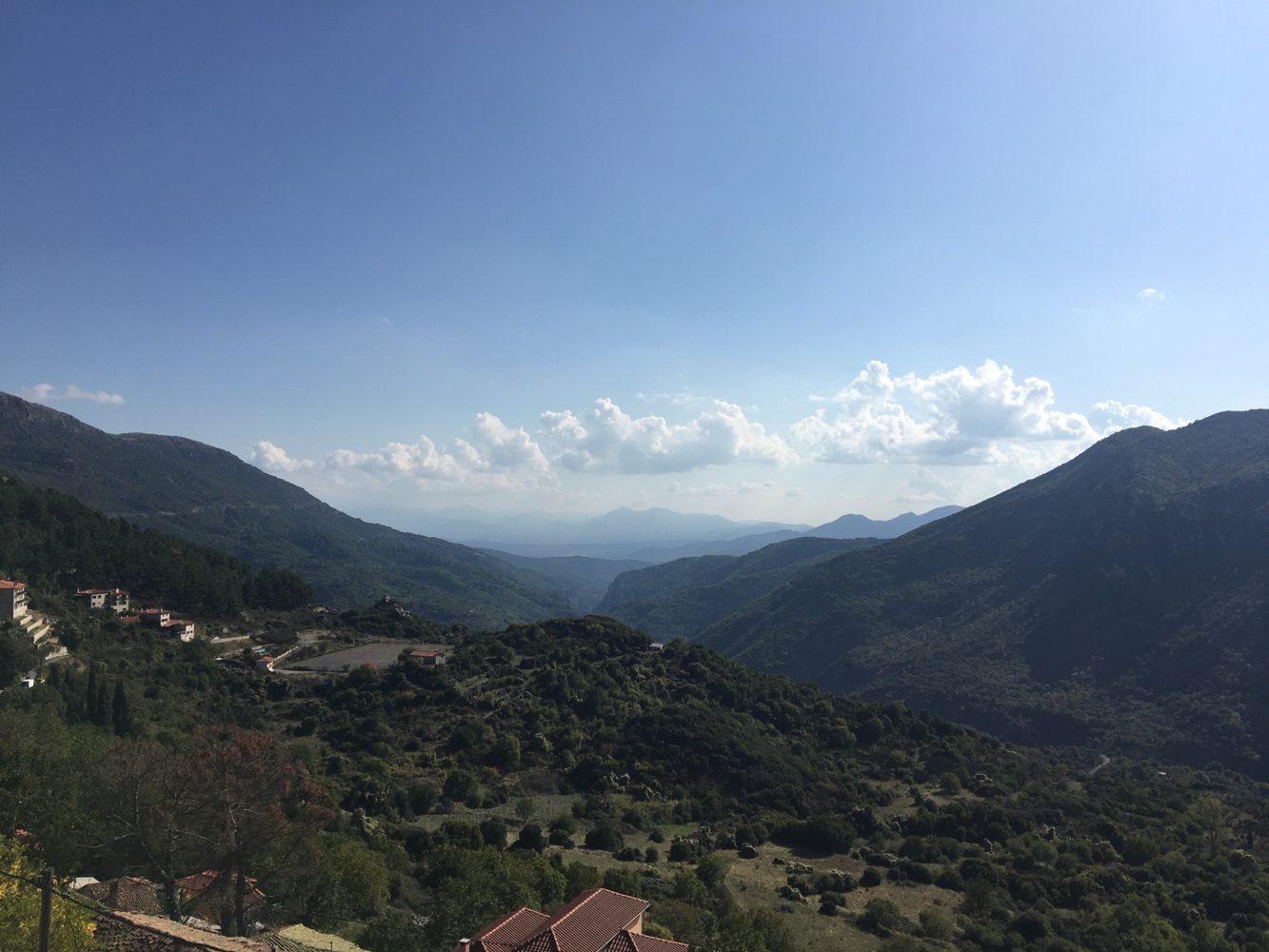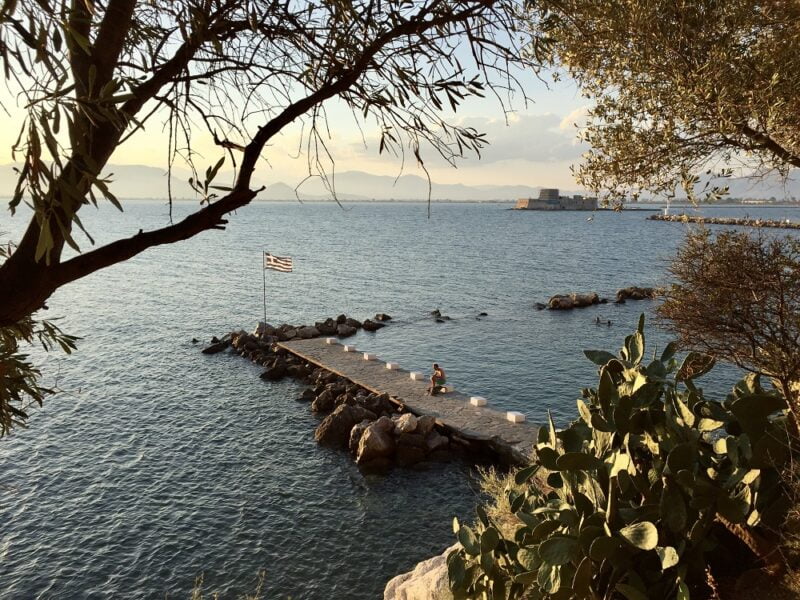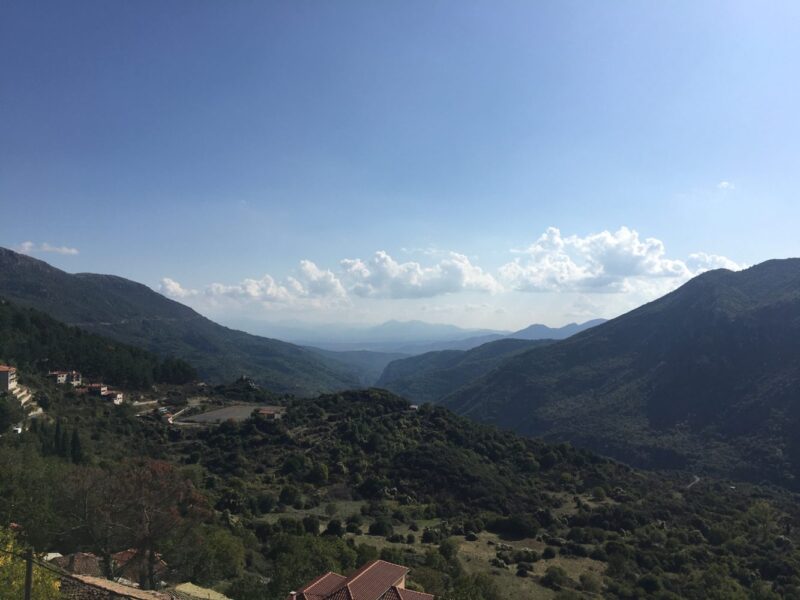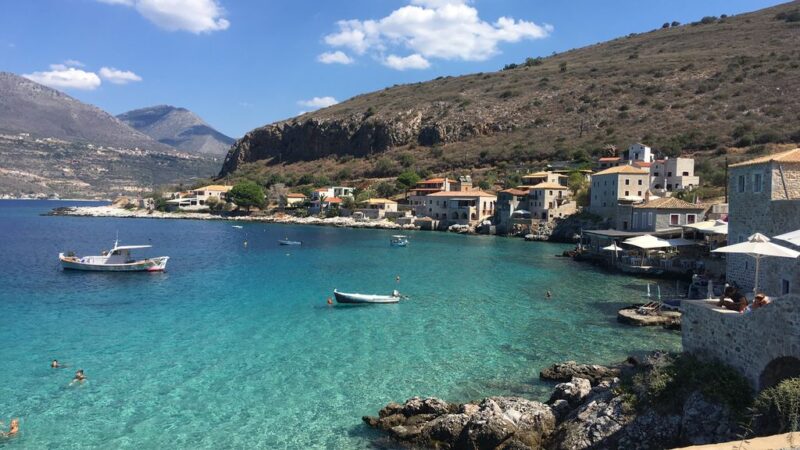With its 1,200 km of coastline, soaring mountains and archaeological sites, the Peloponnese brings together all the best that Greece has to offer. The wild beauty of its beaches and its unique art of living make it an ideal summer destination. But the Peloponnese is also: nature trails, winter sports resorts, crystal-clear lakes and extraordinary gorges! Whether you’re an outdoor enthusiast or an art and history enthusiast, a visit to the Peloponnese is a marvel in every season. So follow the guide: we’ll take you on a trip!
Why visit the Peloponnese in Greece?
The Peloponnese is a vast, mountainous peninsula that opens out to the sea like an open hand. Its breathtaking landscapes alternate between breathtaking cliffs, lush forests, medieval villages, small fishing ports and heavenly beaches. It’s a veritable concentration of Greece over 21,500 km²!
The region also boasts an extraordinary wealth of culture and history. Inhabited since prehistoric times, it was one of the cradles of Hellenism and the scene of most of the conflicts that engulfed Greece.
The Peloponnese is home to numerous archaeological sites of major importance, 5 of which are UNESCO World Heritage Sites:
- the sanctuary of Asclepius at Epidaurus ;
- the archaeological site of Mystras;
- the archaeological sites of Mycenae and Tirynthe ;
- The archaeological site of Olympia;
- The temple of Apollo Epikourios at Bassae.
The peninsula is separated from the rest of mainland Greece only by the Corinth Canal. It is therefore easily accessible from Athens. For a first trip to Greece, this is a destination not to be missed! We go there often, as the Peloponnese is easily accessible from Athens.
What to see in the Peloponnese?
The Peloponnese is divided into 5 administrative regions: Corinthia, Argolida, Arcadia, Lakonia and Messinia.
The peninsula is also home to two districts attached to Western Greece: Achaia and Elide. Let’s take a tour of the Peloponnese and its splendidly varied territories!
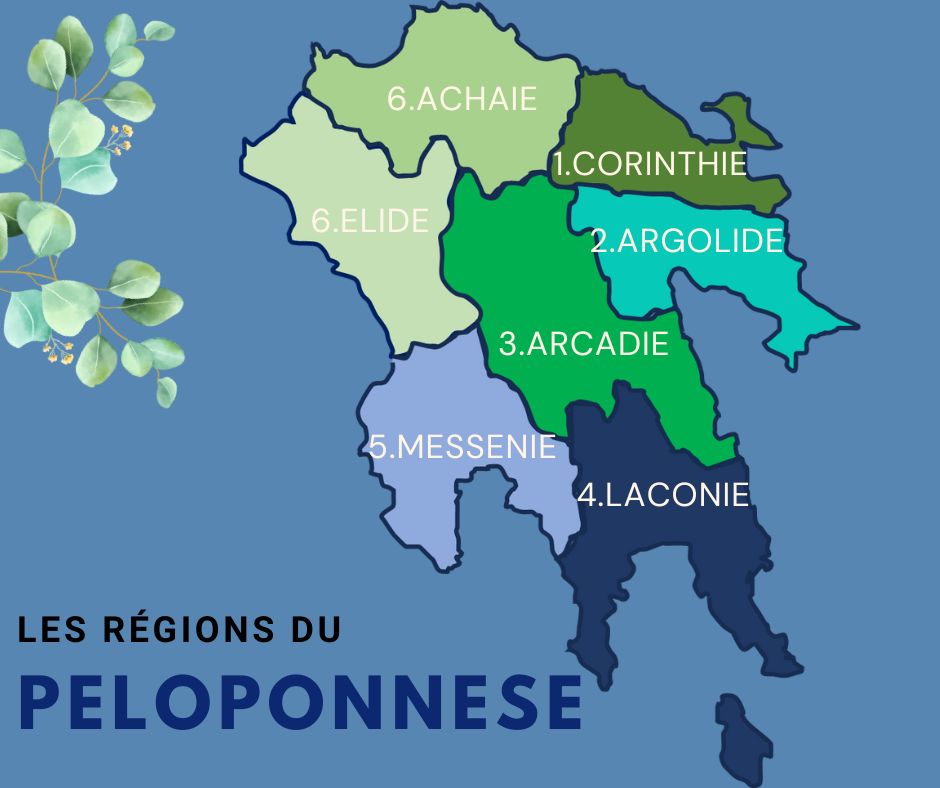
1. Corinthia
Just a few kilometers from Athens, Corinthia offers everything you could hope to see in Greece: coastlines carved against the blue of the sea, picturesque villages, dense forests, crystal-clear lakes and countless archaeological remains.
Ancient Corinth has long been one of the most important cities of ancient Greece. Today’s town is of little interest, but the impressive Acrocorinth citadel still stands as a reminder of its glorious past.
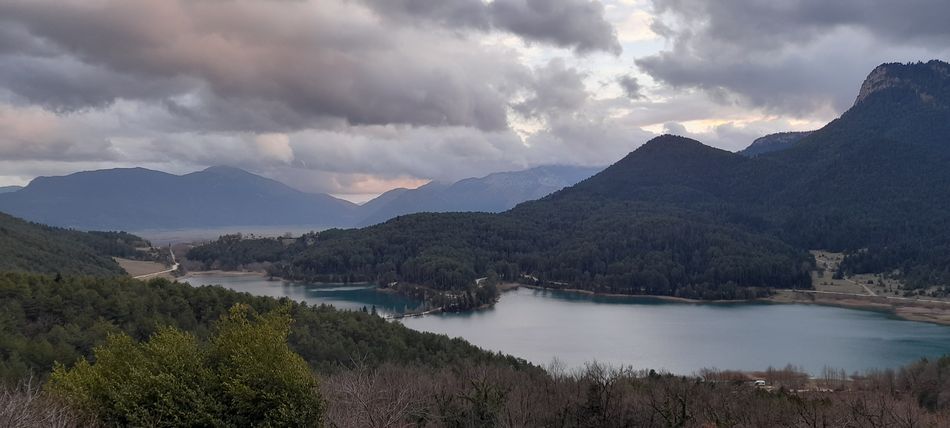
Cross the Corinth Canal to discover this mountainous region dotted with stone houses and generous vineyards! And of course, take advantage of your stay to taste the delicious AOC wines produced at Nemea!
To find out more, read our article on the Peloponnese wine route.
2. The Argolid
To the east of the peninsula, Argolida is the smallest sub-region of the Peloponnese. But it’s also one of the richest in history. Indeed, it was here that the Mycenaean civilization was born, one of the very first in Greece. Inhabited for 5,000 years, Argos is considered to be the oldest city in Europe.
The Argolid is home to many exceptional sites:
- The charming coastal town of Nafplio. It’s a must-see destination for a few days of culture and seaside fun.
- The site of Mycenae. It is one of Greece’s most important archaeological sites.
- The famous archaeological site of Epidaurus. Magical and timeless, it is home to a remarkable ancient theater that hosts the biggest Greek theater festival every summer: the Athens-Epidaurus Festival.
- The pretty fishing village of Ermioni. This picturesque little port offers ferry crossings to the islands of the Saronic Gulf: Hydra, Poros and Spetses.
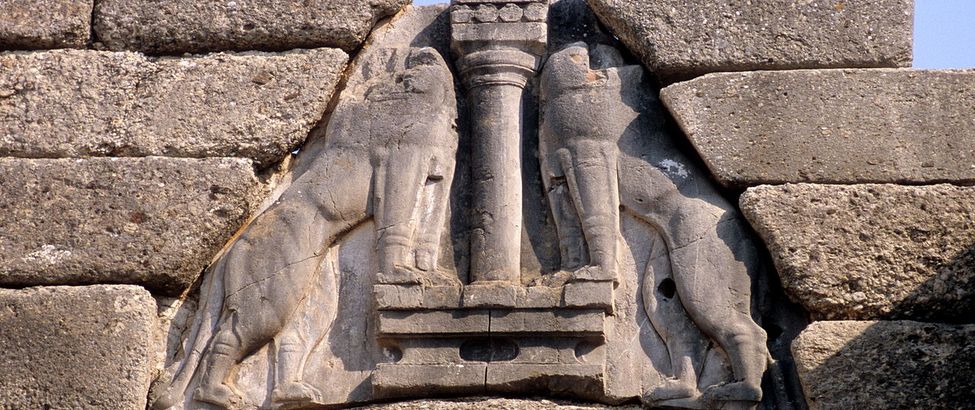
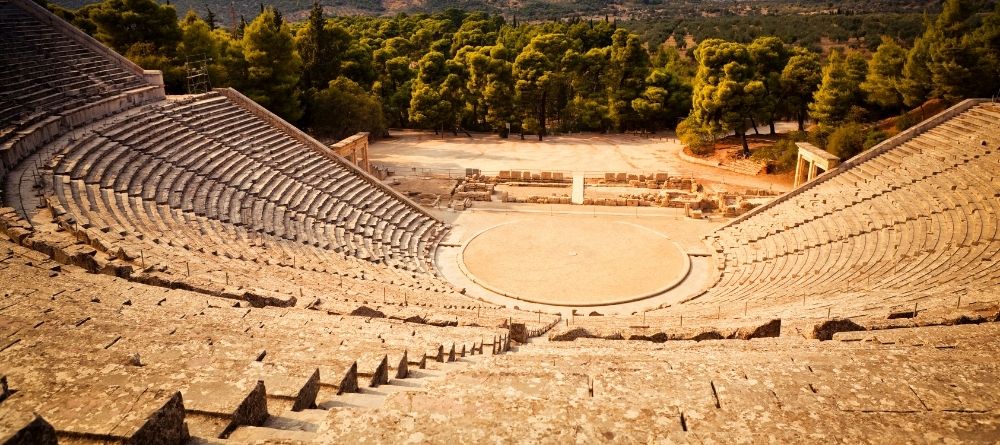
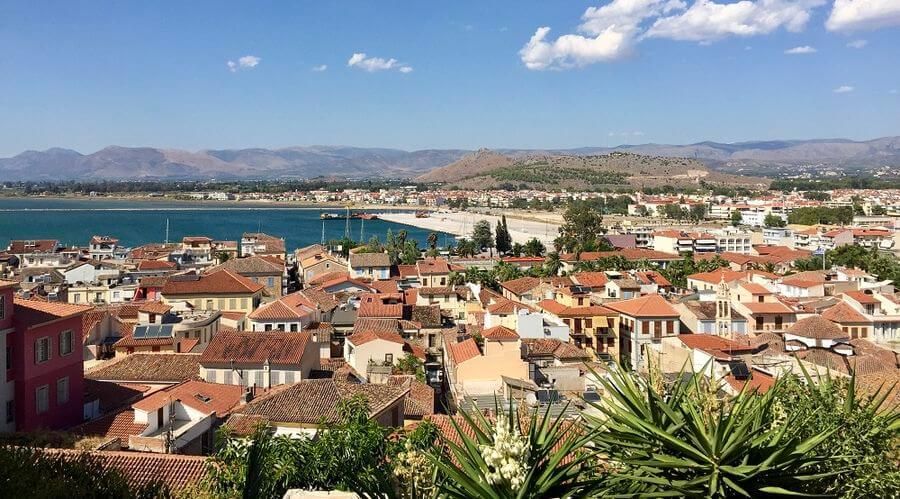
If you want to visit the Peloponnese and discover the treasures of Epidaurus, Nafplio and Mycenae in ideal conditions, we recommend this guided tour in English from Athens.
3. Arcadia
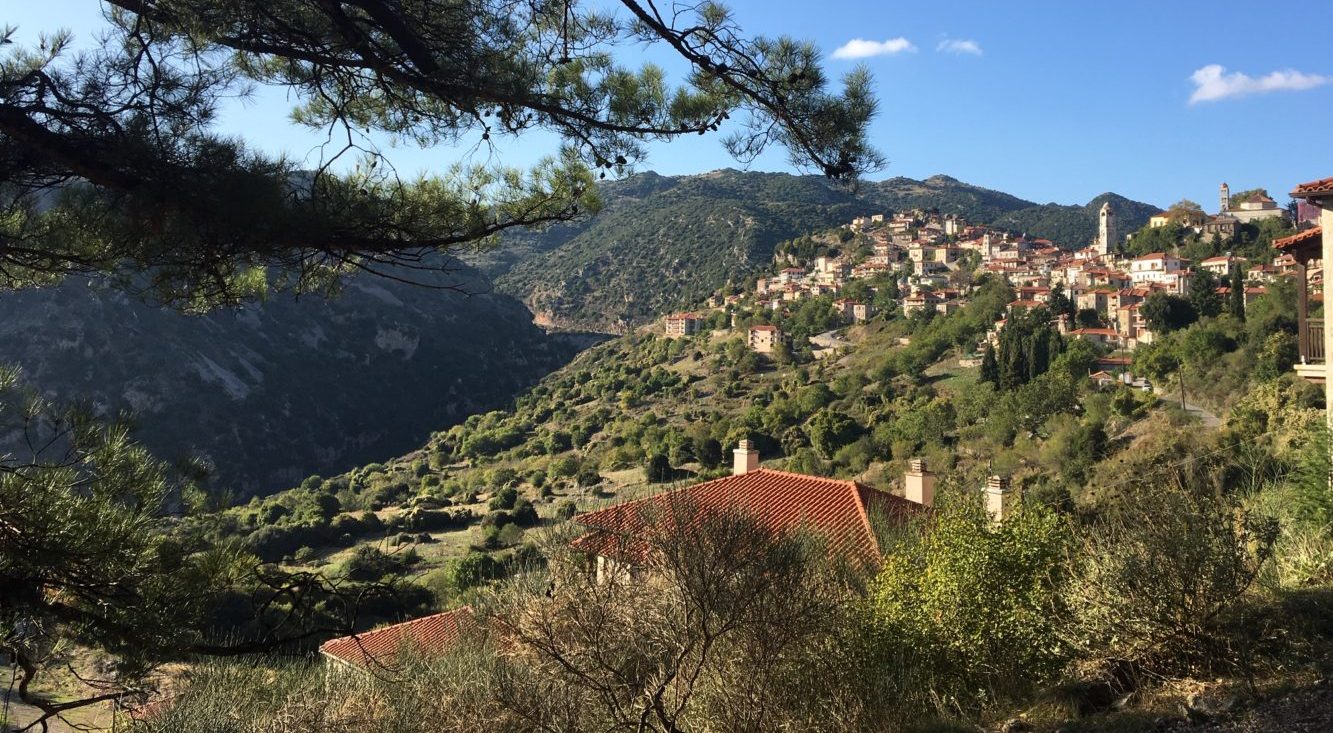
In the center of the Peloponnese, Arcadia unfurls its mountains, rivers, forests and pastures in a magnificent landscape. A completely different face of Greece awaits you here!
Nature is undoubtedly the region’s main asset. But Arcadia is also home to beautiful stone villages such as Vytina, Dimitsana and Stemnitsa. The small ski resort of Mainalon will delight winter sports enthusiasts, while the pretty village of Karytaina will enchant history buffs with its 19 Byzantine churches!
The district’s main town, Tripoli, can be reached in less than 2 hours from the Greek capital. Don’t hesitate to visit Arcadia out of season, it’s a wonderful destination for a winter in Greece!
4. Laconia
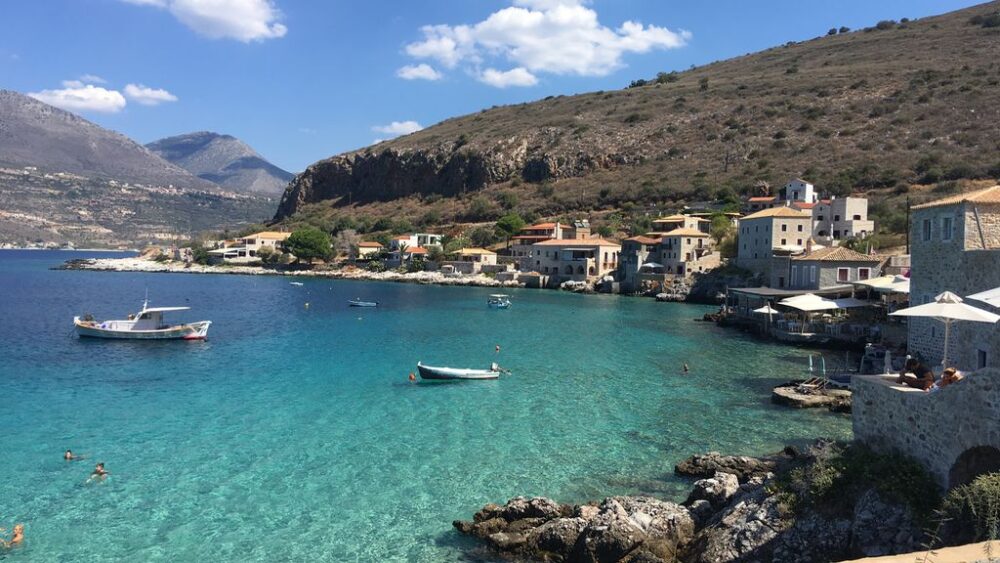
Just south of the Peloponnese, Laconia stretches like two long fingers towards the island of Kythera. This is a splendid mountainous region, bordered by Mount Taygetos and Parnon, and crossed by the Evrotas river.
Laconia is home to some of the Peloponnese’s finest treasures:
- The Mystras site. This fortified city reached its apogee in Byzantine times. Today, relics, churches and monasteries dot the hillside plunging into the sea. A magical place!
- The fortified town of Monemvasia. This marvellous medieval city built on a peninsula appears like a mirage rising from the waters. Don’t hesitate to spend a night inside the ramparts: they’re enchanting!
- Mani. This end-of-the-world paradise promises some of the most spectacular scenery in the country. Small, postcard-perfect harbors dot the coastline like pearls, taking your breath away. Don’t forget to try the local cuisine– it’s delicious!
Read all our articles on Monemvasia and the region of Mani for an unforgettable stay in Laconia!
5. Messinia
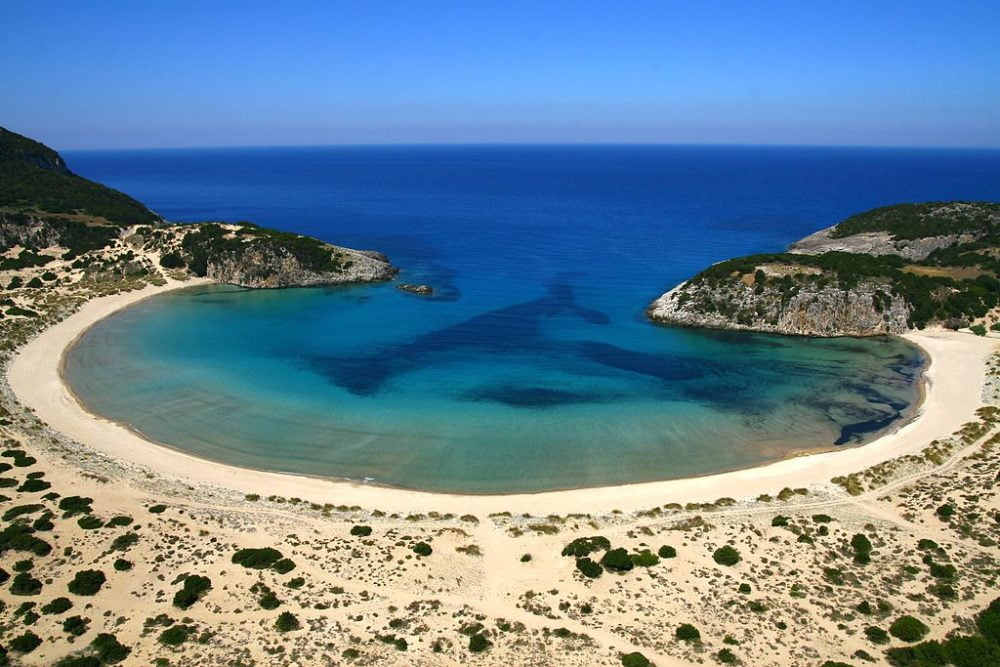
In the southwest of the Peloponnese, Messinia is fertile agricultural land. Its main town, Kalamata, is world-renowned for its production of tasty olives. But the region is also rich in orchards and vineyards, so much so that agrotourism has been flourishing here for several years.
Be sure to visit Messinia :
- To the north, ancient Pylos contains the remains of Nestor’s palace. This Mycenaean king was one of the most influential rulers of Antiquity.
- The splendid horseshoe-shaped beach of Voidokilia. This jewel of white sand lies at the heart of one of Greece’s most photographed reserves.
- Further south, the small port of Methoni is home to a remarkable medieval Venetian fortress. The view of the bay’s turquoise waters is simply breathtaking!
Find out all the must-see places in Messinia in this article!
6. Elide and Achaia

In the north-western Peloponnese, the districts of Achaia and Elidia link the peninsula to Western Greece, of which they are a part.
Olympia is located in Elidia. The birthplace of the Olympic Games, it is one of the world’s most famous archaeological sites. Here you can admire the remains of the Temple of Zeus and follow in the footsteps of the mythical athletes of antiquity!
In the far north, Achaia joins Corinthia, where we began our journey through the Peloponnese. The region is dominated by the Panachaikon mountain range, which rises to an altitude of 2,000 m. If you’ve always dreamed of skiing in Greece, you’ve come to the right place! The charming mountain village of Kalavryta is home to a renowned ski resort where you can enjoy snow sports in an exceptional setting!
How to plan your trip to the Peloponnese?
By far the best way to visit the Peloponnese is by car! From Athens, it’s easy: the freeway to Elefsina takes you to Corinth. From here, you can take one of the three highways that criss-cross the Peloponnese:
- Corinth-Kalamata highway;
- Corinth-Patra highway;
- the Olympic highway linking Patras to Pyrgos.
Plan your itinerary according to the time you have available, and leave yourself a little leeway to get lost in the Peloponnese’s breathtaking landscapes!
Here are some of our favourite itineraries for visiting the Peloponnese:
- The ideal itinerary for a week in the Peloponnese
- Peloponnese off the beaten track
- Peloponnese must-sees
With all our tips, you’ll have everything you need for a tailor-made vacation in the Peloponnese!
How do I get to the Peloponnese?
By plane
Athens airport is very well served from international. Would you prefer to fly to the Peloponnese without passing through the Greek capital? It’s possible, although flights may be rarer depending on the season. You can choose between two airports in the Peloponnese:
- Araxos airport, 40 km south of Patras.
- Kalamata International Airport, in the heart of the Peloponnese.
By car
This is certainly the best way to get to the Peloponnese. By renting a car from Athens or once you’re here, you can get around easily and discover the Peloponnese in complete freedom!
By bus from Athens
Can’t afford to hire a car to visit the Peloponnese? No problem: several buses leave Athens for the Peloponnese every day. They drop you off at the KTEL station in Isthmos, a few kilometers from Corinth. From here, you can take a new KTEL bus to the destination of your choice: Nafplio, Tripoli, Sparta, Kalamata, Pyrgos or Patras.
By boat
Patras is the most important port in the Peloponnese. This is where you’ll arrive by boat if you’re driving from Italy or the Ionian Islands.
There are also sea links to the ports of Ermioni and Porto Heli and from the islands of the Saronic Gulf. And connections between the port of Kyllini and Zakynthos or Kefalonia.
Finally, you can take one of the ferries that run between the island of Kythera and the ports of Neapoli, Kalamata or Gytheio.
We hope you enjoy discovering the Peloponnese!
Sandra B.
